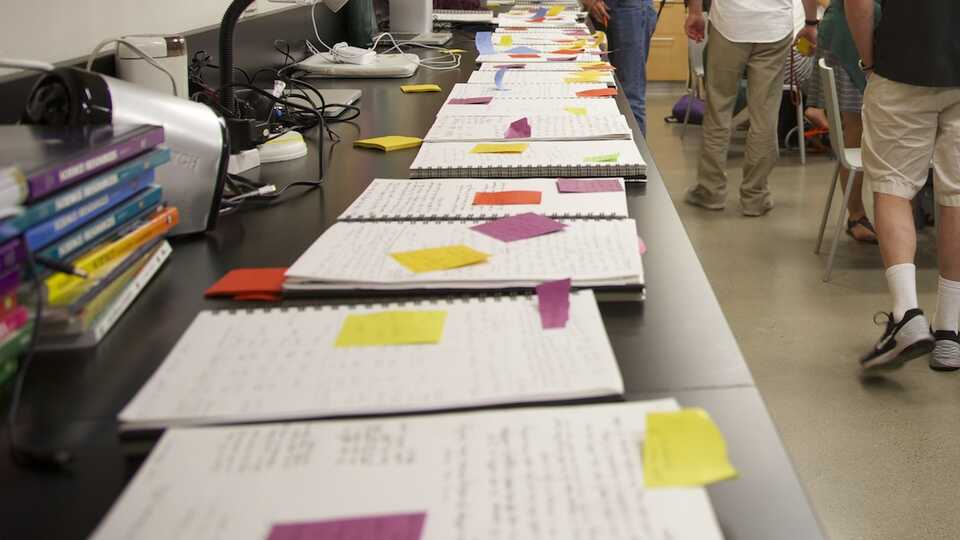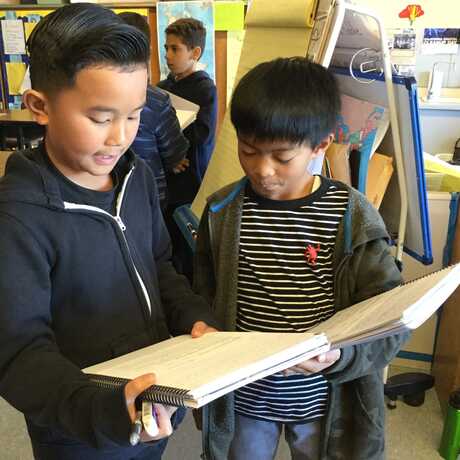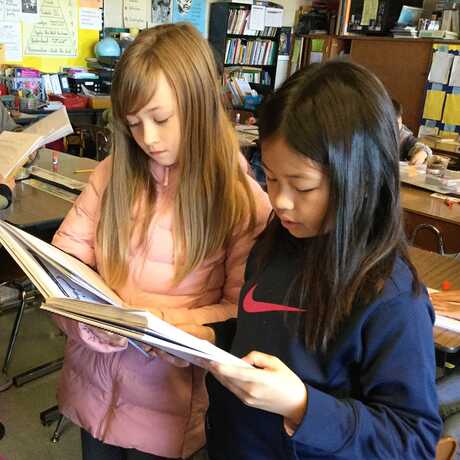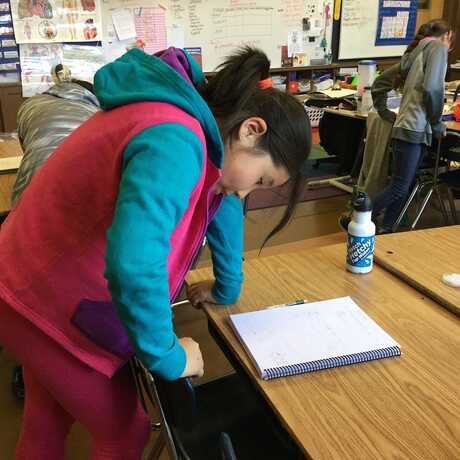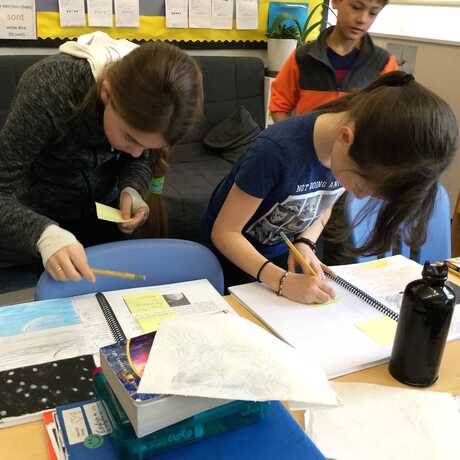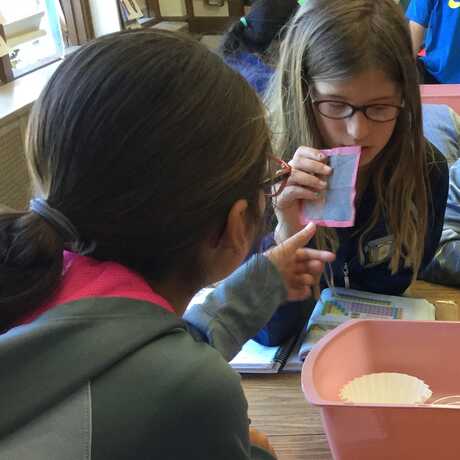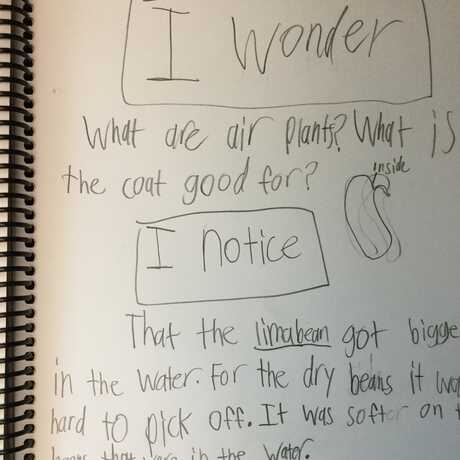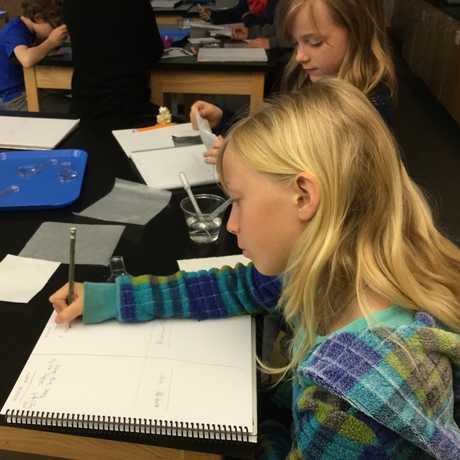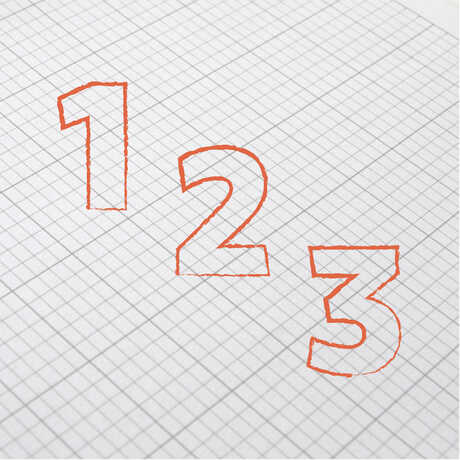
Scientists don’t work in a vacuum. They frequently share their observations, experiments, findings and explanations with other scientists. Scientists share to communicate their own ideas, but also to receive feedback from the field. What do other scientists have to say on the same subject? What questions do other scientists have in response?
In the classroom, there are many reasons to make science notebooks public. When a student shares her work with a peer, she may recognize for the first time whether she has made her thinking clear and visible. And, when a student reviews another’s notebook page, he might learn new ways to organize and communicate his work. Surveying the entire class of notebooks enables everyone to get a sense of all the thinking in the room. With some facilitation, this sharing can be a launching point for the group to advance its collective understanding of a topic.
It’s important, however, to consider when and what to share from science notebooks. Some work in the notebooks may not have been intended for an audience. Perhaps students were working out their ideas and using notation systems that only make sense to them. When you plan a sharing an activity, it’s helpful to alert students ahead of time so that they can record their thinking with an outside audience in mind. Below are a few strategies for peer-to-peer notebook sharing.
